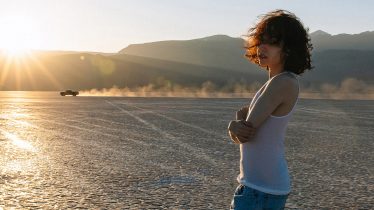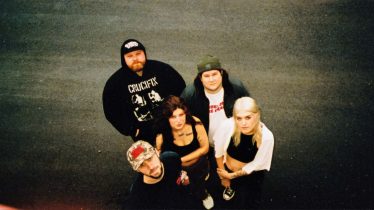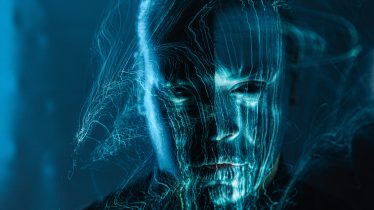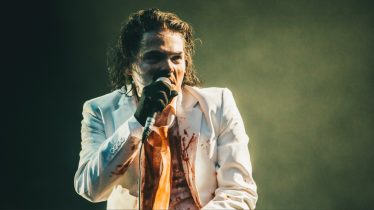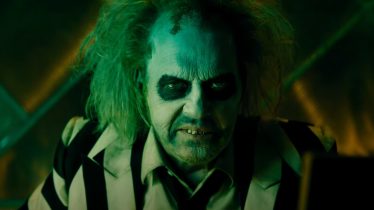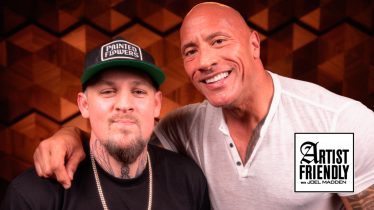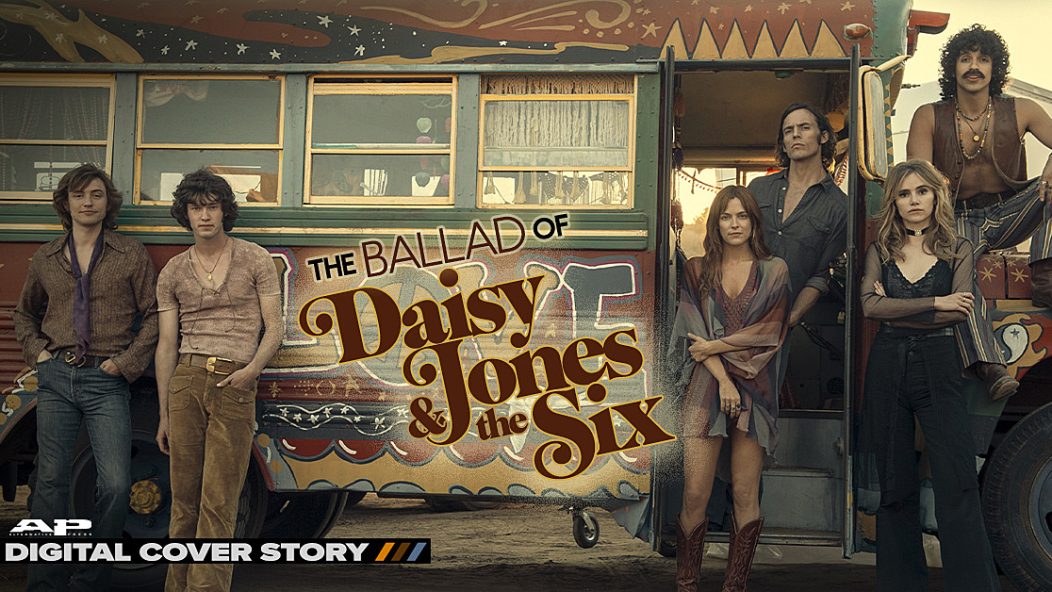
The evolution of Daisy Jones & the Six: how the cast and crew made a fake band real
THE FIRST TIME DAISY JONES & THE SIX PLAYED A LIVE GIG, the tequila shots were flowing, the drums were blaring and there was nary a backing track in sight. But it wasn’t a beer-soaked local dive bar or even a sweaty, sold-out crowd at The Troubadour — it was a debut performance in front of roughly 100 executives and crew members at SIR Studios in Los Angeles. Until then, Daisy Jones & the Six were just a concept — a group of actors with a dash of musical experience to their names. But in September 2021, with this first “concert” under their ‘70s vintage leather belts, they officially became a band.
After a year-and-a-half of diligently practicing their respective instruments and vocal parts, it made sense. They were able to showcase their movements and hear what they sounded like — embrace the ecstasy of commanding a stage — before they began shooting the Amazon limited series about the very fictional band they were becoming — Daisy Jones & the Six.
Read more: 20 best fictional bands
The series showrunner Scott Neustadter (500 Days of Summer) credits his wife and executive producer Lauren Neustadter with the “genius idea” for the set. “There was no fakery, everyone was playing their own instruments, [and] everybody was singing into the mics. They all learned what [playing a concert] feels like and could channel it when the cameras were on,” he says, over the phone from New York where he’s in town for press ahead of the release of Daisy Jones & the Six.
It was all very rock ‘n’ roll — sans the top brass. But a gig’s a gig, especially when you’ve actually become the bell bottom-wearing rock stars you’ve been portraying on-screen.
Truthfully, Daisy Jones & the Six didn’t really know how adept they’d be at the whole rock star thing. They figured they’d get good, but they had the opportunity to get really good. Initially, the actors had roughly six months to become skilled musicians — they were meant to be ready to shoot by April 2020. The COVID-19 pandemic of course put a wrinkle in those plans, but it ended up giving the actors a chance to practice for 18 months, including two rounds of three-month-long band camps and a year-and-a-half of Zooms. By the time they were ready to shoot, Neustadter says, “they were actually really, really talented.” “Everyone couldn’t really believe how far they’d come,” he says, awestruck.
But most of the actors weren’t starting from scratch. In fact, everyone who auditioned for their roles needed to have “musical experience.” “We didn’t really ask to what extent they had musical experience,” Neustadter laughs, “but we wanted to know that they wouldn’t be coming at it completely blind.” Riley Keough and Sam Claflin, who play folk singer-songwriter Daisy Jones and bandleader and guitarist Billy Dunne, respectively, were shower-singing experts and did musical theater as kids; Suki Waterhouse (keyboardist Karen Sirko) barely played piano, but she had experience singing since her teens and released her first single in 2016 with an album last year; Josh Whitehouse (bassist Eddie Roundtree) was already a musician but learned to play bass for the role; Will Harrison (lead guitarist Graham Dunne) was in a band in college; Sebastian Chacon (drummer Warren Rojas) already played drums. Someone just needed to bring the rock stars out of them.
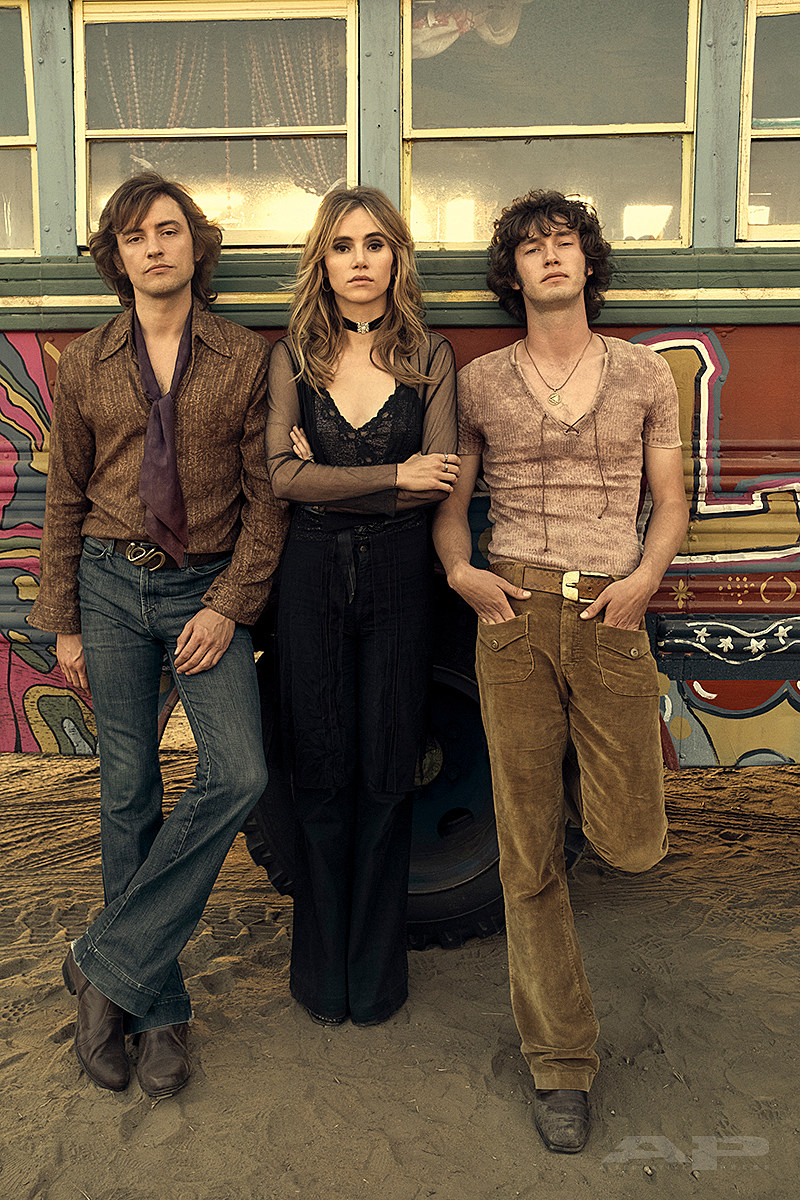
[Courtesy of Amazon]
THE WORLD OF DAISY JONES & THE SIX is steeped in the jolt of ‘70s rock ‘n’ roll, cigarettes and booze, flowy caftans and the Sunset Strip — a love letter to Los Angeles when free love was in and it was all about the music, man.
Based on the 2019 best-selling novel by Taylor Jenkins Reid, Daisy & the Six (which premiered March 3) is the gritty and glamorous snapshot of a 1970s band’s meteoric rise to fame and its near-instantaneous crash. But beyond the Laurel Canyon-esque rock ‘n’ roll saga, which is dipped in Fleetwood Mac lore, is a compelling love story and a tale of self-realization.
The rock soap opera tells the story of the Six, a Pittsburgh band led by Billy, his brother Graham, as well as Eddie, Karen, and Warren. Things get tense and complicated when Daisy crosses paths and ends up joining the band while a “will-they-won’t-they” relationship hovers over her and Billy, who is married to his photographer wife Camila Alvarez (played by Camila Morrone). So not only is the band’s drama all-consuming, but the love and lust that entangles them is, too. However, this love triangle doesn’t include punching down.
“Every single person involved wants the best for each other, and it’s the complexity that makes it interesting. Camila has deeply different needs from her marriage than Billy does, and they’re learning how to talk about those things — and the same with Daisy. Ultimately, part of what is so beautiful about writing the show is that there are no enemies,” showrunner Will Graham explains.
Turning Daisy Jones into a rockumentary-style show really began with showrunner Scott Neustadter back in 2017. The self-proclaimed “music dork” was given the early manuscripts of Reid’s book by her manager Brad Mendelsohn because he thought he’d like it. Well, he more than liked it — his dream project was making a movie version of Fleetwood Mac’s 1977 classic Rumours. “I went crazy,” he laughs. It was around the time his wife had just started at Hello Sunshine with Reese Witherspoon (she’s now president of Film and Television there), and he insisted that the book would make for a thrilling TV show. “We’d never worked together, and I was like, ‘We should maybe do it together. It’d be really fun,’” he notes. After showing it to Witherspoon (who also executive-produced the show), the trio insisted Reid work with them. “There was no other choice. We just had to get the opportunity to make this TV show,” he insists.
There are a handful of liberties taken in the on-screen adaptation — there’s a connection between Eddie and Camila in the show; there are some shifts overall in the romantic relationships; record label producer Teddy Price (played by Tom Wright) and disco pioneer Simone Jackson (played by Nabiyah Be) have much bigger roles in the show; Warren’s last name changed from “Rhodes” to “Rojas”; and Pete Loving, the sixth member of the band, isn’t in the show. But Daisy and Billy are there in all of their glory — Daisy and her defiant spirit chilled out by her shimmering caftans and Billy brooding in his beloved Canadian tuxedos like Billy Crudup’s Russell Hammond.
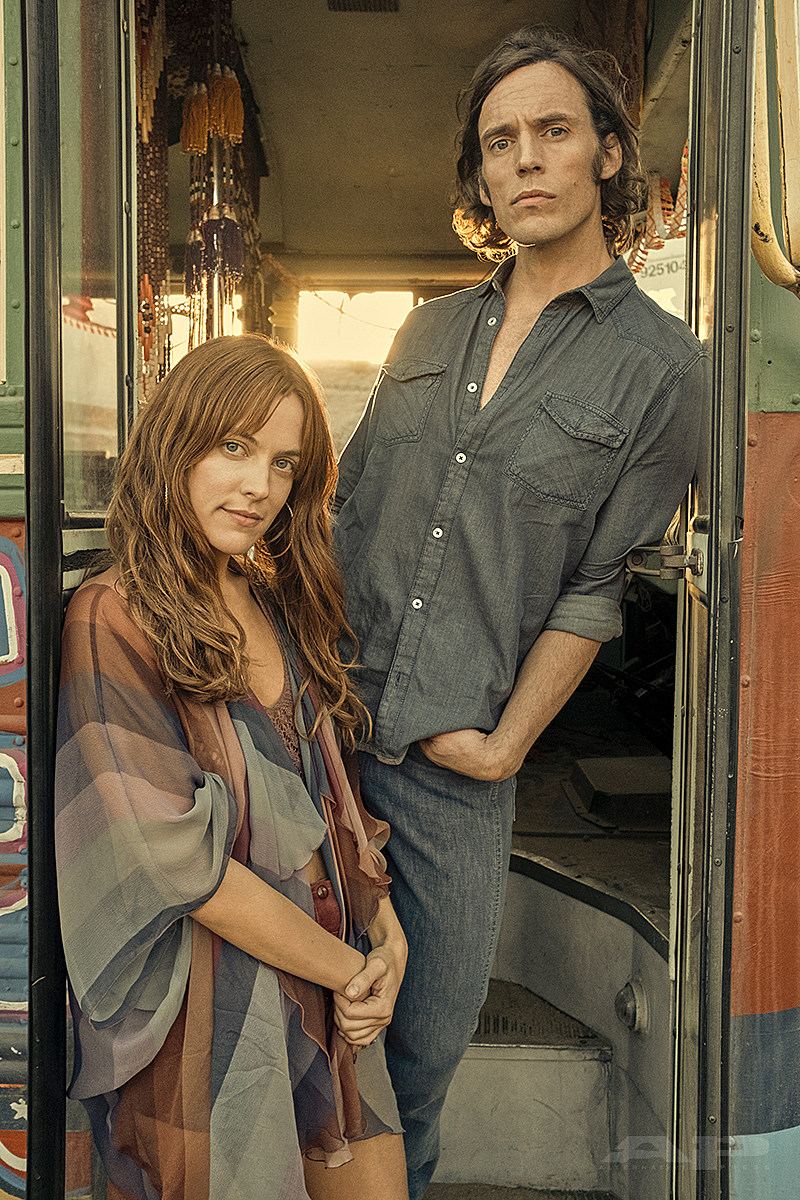
[Courtesy of Amazon]
Casting Daisy was perhaps the easiest part of making the series. “Very early on in the process, Riley had read the book, raised her hand and said, ‘I think I was put on this Earth to play Daisy,’” Scott Neustadter recalls.
Graham adds over the phone, “Riley is brave without being fearless, if that makes sense. There was something about that combination of confidence and vulnerability that for all of us just rings a bell with who Daisy is as a character. Then when we heard her sing and we watched her read [for the part], you just thought, ‘OK, this person has this character inside of them.’” Keough was an easy “yes,” but it set the bar really high.
As simple as it was to cast Daisy, it was equally as challenging for nabbing an actor for the role of Billy, a complicated guy who wants the best for his family and the band but wrestles with his own ego. “We saw every Billy in the world, and it’s such a hard part to nail,” he adds. “We just wanted to make it perfect.” Enter Claflin, the last person they cast in the show. “Billy’s a complicated guy and does some complicated things, and what really struck me in our meetings with him, but also in watching him work, is Sam has an inherent goodness that I think comes through in Billy,” Graham notes.
Claflin was up for the emotional challenges the role brought because he was weathering his own roller coaster of personal strife, including a divorce from his then-wife Laura Haddock. “There’s something about this job being at this time in my personal life and after COVID,” he says trailing off, before Keough adds, “We all had gone through so much in our lives and COVID, and so everything was heightened.”
Claflin continues, “I’d go for runs in the morning and listen to Joni Mitchell crying, and then go to work going, ‘OK, I’m cried out for the day.’ ‘But it was so many emotional scenes. So many of them felt so close to home.’”
Claflin and Keough found the band’s final on-screen performance together at Chicago’s Soldier Field – shot in New Orleans at Tad Gormley Stadium — the most emotionally tolling. “I couldn’t stop sobbing,” Claflin recalls, as Keough interjects, “I couldn’t either, and they were like, ‘Riley, I don’t think we want you to cry in this. Go.’”
After each take, Claflin had to run off and sob. “I was like, ‘I’ll never get to sing it again,’” he says, fake crying. “But then the producers were like, ‘Sam, we want to do one where you don’t come on already crying.’”
But it’s that raw vulnerability that fueled the on-screen messiness between Daisy and Billy, as the actors and crew filmed throughout Los Angeles, New Orleans and Hydra, Greece.
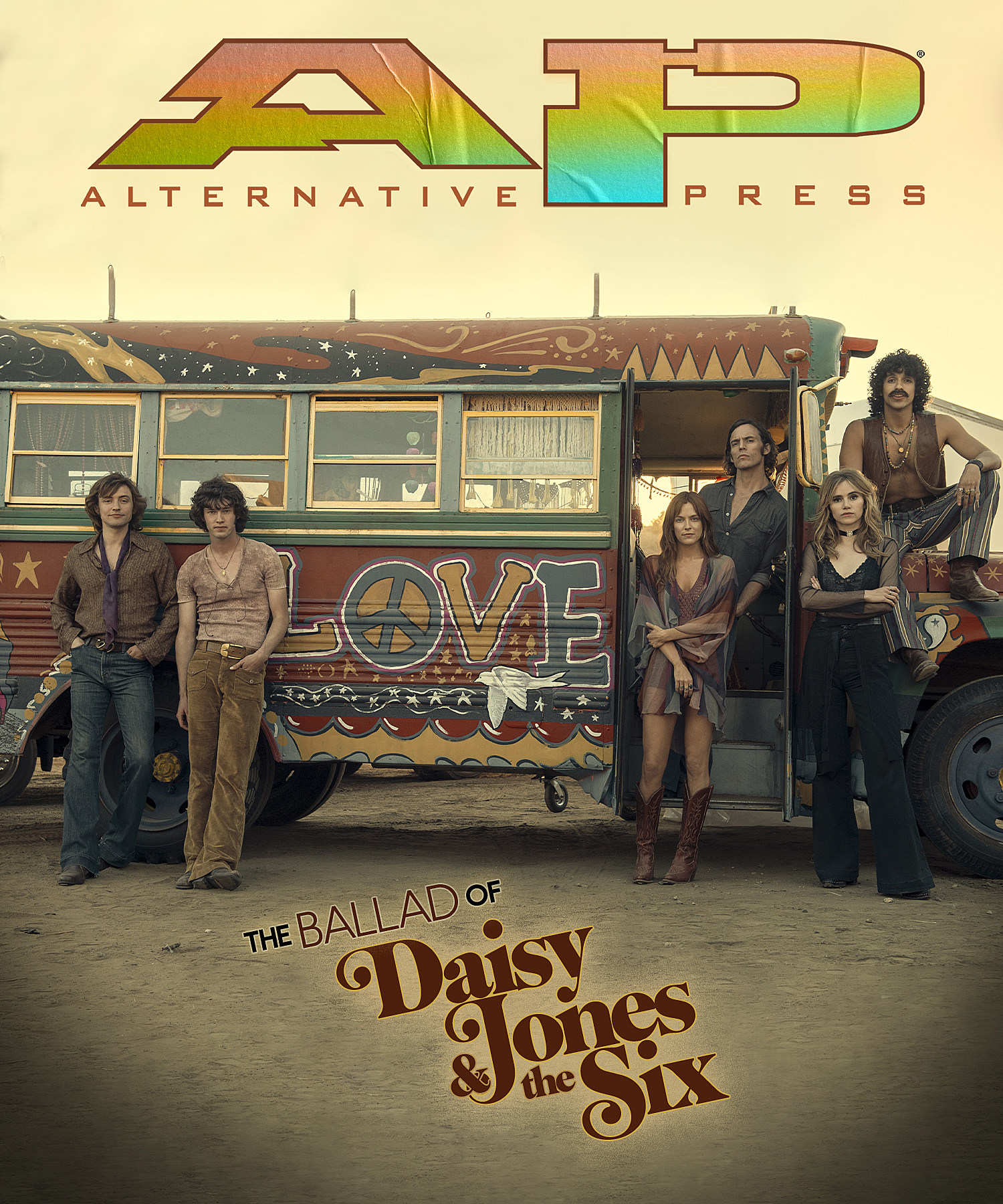
[Courtesy of Amazon]
Of course, any Fleetwood Mac fan will say it’s easy to see the band’s influence in Daisy Jones & the Six. They’ll imagine Stevie Nicks as Daisy when she twirls in the stage light with her billowy sleeves and Lindsey Buckingham and Nicks’ stormy relationship as they watch Daisy and Billy’s dramatic storm-outs and magnetic stares onstage. After all, Jenkins Reid did draw inspiration from the rock outfit. In a 2019 essay for Hello Sunshine, the production company behind the series, she revealed that she “kept coming back to that moment when Lindsey watched Stevie sing [the 1997 live performance] of ‘Landslide.’” How it looked so much like two people in love. And yet, we’ll never truly know what lived between them.” Her goal was to explore “how the lines between real life and performance can get blurred, about how singing about old wounds might keep them fresh.” She told The Guardian that she wanted “to know if Stevie Nicks and Lindsey Buckingham slept together after Rumours.”
The rock mythology on the show, however, goes deeper than that one ‘70s band. According to Neustadter, the band are a composite of John Fogerty, Tom Petty, Joni Mitchell, Judee Sill and the whole Laurel Canyon scene of singer-songwriters. And with Billy specifically, there’s “a lot of Bruce Springsteen in him,” Scott Neustadter notes.
Individually, each actor channeled different artists. Keough studied Cher, Joni Mitchell, and Linda Ronstadt, but also watched Robert Plant and Jimi Hendrix “to see what their physicality was onstage.” “I found that a lot of the women in that era, aside from Janis Joplin, weren’t as big in their movement as Daisy was written to be,” she notes over Zoom from a hotel room in Los Angeles. “So it was about marrying the reality with this character, but also making her feel free and ahead of her time.” Keough, the granddaughter of Elvis, added that he “wasn’t who I was looking at for reference for this, but I certainly have seen this world a lot in my life and my knowledge of the music world.”
Waterhouse took cues from the Pretenders’ Chrissie Hynde and Blondie’s Debbie Harry, but there was one figure she credits in particular. “Christine McVie, of course, [was a huge inspiration] because Karen is English in the show, and who’s more of a quintessential English keyboard player than her with a great, gorgeous spirit and somebody that knew what it was like to support a frontwoman the way that she did,” she explains over Zoom from a hotel in Los Angeles. “So I definitely owe it to her.”
Chacon studied flamboyant players like Tito Puente and drummer Jo Jones. He ditched puckering his lips for “spicy faces.” “I was like, ‘No, I have to make silly faces. It’s the only way for this character to work,’” he explains over Zoom from a hotel in Los Angeles. Whitehouse was inspired by bassists Jaco Pastorius, Victor Wooten, and Pino Palladino, but also watched documentaries for “general physicality,” he adds over Zoom.
For her role as Simone, Be channeled Diana Ross and Chaka Khan, but drew from lesser-known artists and background vocalists like Linda Clifford and Claudia Lennear, as well. She also “listened to a Spotify playlist called ‘Brazilian Disco Funk,’ and had on repeat both ‘Reasons’ by Minnie Riperton and ‘Bridge Over Troubled Water’ by Simon & Garfunkel.
Their patchwork of influences laid the groundwork for the makings of a very real fake band and their on-screen artist friends.
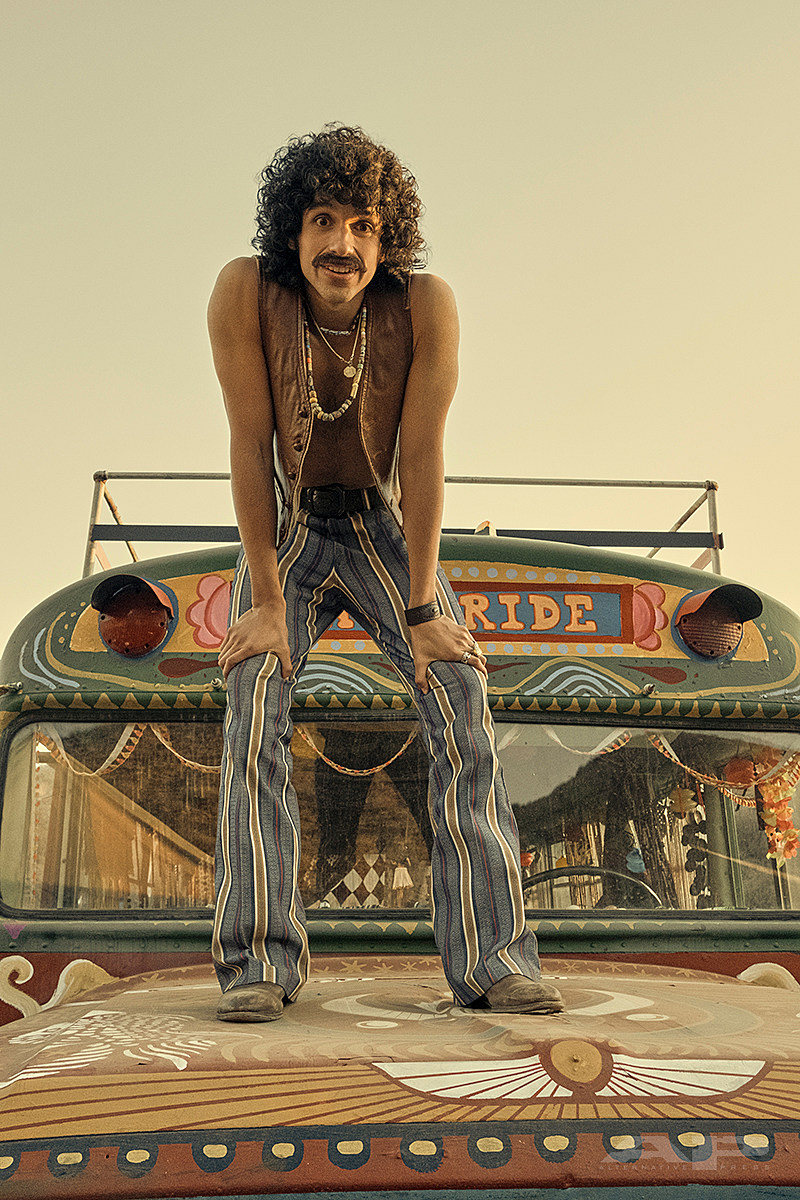
[Courtesy of Amazon]
WHILE MANY OF POP CULTURE’S MOST BELOVED FAKE BANDS were voiced by already established singer-songwriters — The Wonders by Fountains of Wayne’s Adam Schlesinger, Josie & the Pussycats by Letters to Cleo’s Kay Hanley, Stillwater by Pearl Jam’s Mike McCready — Daisy Jones & the Six had to feel real, they had to release an album.
Enter Aurora, the rockers’ debut, which is nothing short of real. Helmed by songwriter and executive producer Blake Mills with additional production from Tony Berg, along with revered talents including Phoebe Bridgers, Jackson Browne, Marcus Mumford, Z Berg and Dawes’ Taylor Goldsmith, the album was recorded at Sound City Studios (also the setting of the book and TV series), where Fleetwood Mac made Rumours and Nirvana shaped Nevermind. “You can feel the ghosts in the walls, and there’s just an unpretentious magic about the place that we wanted to come across in the show as well,” Graham explains.
The songwriters and musicians were given a handful of parameters for penning tracks, including a general storyline and instruments from no later than the 1970s. “We wanted the music to be reminiscent of that time period, but we also wanted it to stand on its own in 2023, to have that fresh sound,” music supervisor Frankie Pine explains over the phone from Los Angeles. Songwriter Chris Weisman, who penned several of the tracks from the series, including the album’s title track, found that writing imaginary hit songs for the 1970s was surprisingly liberating. “The constricting place to try to write a hit song is here [in 2023] because we’re so much more conservative musically now than the 1970s were,” he explains over the phone from Vermont.
And despite Reid’s book featuring track names and lyrics for the band’s songs, none of the lyrics were used. But that doesn’t mean they didn’t channel Reid’s material. For instance, the show’s diss track “More Fun to Miss” is the book’s “Impossible Woman,” the song Billy writes for Daisy when he’s angry with her. “It felt hard to be like, ‘Oh, and also you have to use all of these lyrics because you’re not going to tell Jackson Browne or Phoebe Bridgers or any of those people ‘We don’t want any of your lyrics,’” Scott Neustadter explains. In fact, it was the original songs themselves that informed the tension, drama, and interactions on the show — the album was recorded before filming began.
Though the Daisy Jones & the Six actors played everything while they were shooting for authenticity purposes, Aurora featured Keough and Claflin’s vocals but enlisted professional backing musicians for the instrumentals.
Ahead of the series, Daisy Jones and the Six debuted the fiery kiss-off “Regret Me,” as well as their second single “Look at Us Now (Honeycomb),” a rollicking ‘70s rock track flanked by kickdrums with a searing guitar solo. “It had to be the hit song. It had to be the pinnacle of their relationship song,” Pine says of the latter.
While the songwriters weren’t trying to make a Fleetwood Mac record, a few of the songs were inspired by the band. Z Berg cited the Rumours hit “Dreams” as a direct inspiration for the harmony-rich soft-rock track “Let Me Down Easy,” while “Regret Me” is Daisy and Billy’s own twist on the torch song “Silver Springs.” “There was something about the authenticity of songs that were from real places of heartbreak and longing that really resonated more and were making it into the show,” she recalls. She jokes that a handful of the songs she penned including “The River” and “Let Me Down Easy” — were written in a Daisy Jones-like love triangle “by two girls and a guy, me and two people who were dating at the time.” “I feel like Daisy Jones wants what Daisy Jones wants,” she laughs over the phone from Los Angeles.
Ultimately, the great undertaking of the Daisy Jones & the Six LP paid off: Aurora was the first album by a fictional band to reach No. 1 on iTunes. Plus, there’s more music coming from the music masterminds of Daisy Jones & the Six — 25 songs from the series total are set to be released later this year. In addition to the EP-like release of tracks with each episode, there’s another companion album on the way featuring the other artists from the show like Simone Jackson, The Dunne Brothers, and Wyatt Stone.
And naturally, the explosive hype surrounding the band have led to pleas from fans online for the TV stars-turned-band to play live shows. So will they? Everyone has their own vision for Daisy Jones & the Six to officially meet their fanbase.
Much like the show, Pine hopes that the band earn a stint as musical guests on Saturday Night Live. Scott Neustadter is ready to buy a ticket to a show on tour (“If the timing could work, that would be the coolest thing ever.”) Waterhouse suggests a Troubadour show where Morrone quips over Zoom from Los Angeles that she’ll “be photographing.”
And Keough and Claflin? They’re ready to sell tickets themselves.
“We’ve been away from each other for so long that when we get in a room together, we’re so giggly and excited to see each other. If you asked us to do anything together, we’d be like, ‘Yes.’ Get on a ship and sail around the world, we’d be like, ‘OK,’” Keough reveals.
“I think we’d all jump at the chance,” Claflin adds.
In the meantime, start planning your Daisy Jones-approved outfits.
